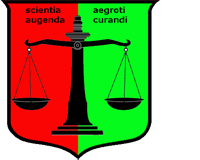Professor Dr. med. Christian ScharfetterDept. of Psychiatry, Psychotherapy & PsychosomaticsPsychiatric Hospital, University of Zurich |

|


|
Normative DatabankOur normative molecular-genetic databank comprises an extensive selection of genotypes derived from 15,000 ethnically diverse subjects and calibrated according to Zurich standards. The samples included in the databank have been specifically selected for investigations into the genetic predisposition to complex disorders, such as schizophrenia, schizoaffective disorders, bipolar illness, depression, Alzheimer disease, alcohol dependence, hypertension, and asthma. Chromosomal Maps: Integrating Genetic and Physical InformationCurrently available genetic and physical maps differ in a variety of basic features, in particular, with respect to the total length of the chromosomes. Consequently, the question arises as to the extent to which genetic maps are compatible with each other, as well as to the methods with which genetic maps can be transformed into one another. We have recently proposed a set of nonlinear, polynomial transformations that enable the integration of genetic maps at a sufficiently high precision. Thus, our analyses are based on extended versions of the deCode, the Ensembl and NCBI maps. Neural Network AnalysisNeural Network Analysis (NNA) provides powerful tools for modeling pre-specified responses to complex, multidimensional input stimuli. It is the specific advantage of NNA that no causal relationship between stimuli and response is required. Since NNA relies on adaptive learning strategies, experienced users can easily fit virtually any set of nondegenerate stimuli to any set of responses, provided a sufficiently large and representative set of learning probes is available. |
|

Explicit construction of a genetic vector space spanned by 25 polymorphic markers within candidate genes from the inter-indivual genetic distances between 257 unrelated subjects. The scatter plot shows a cross-comparison between empirical distances and the Euclidean distances derived from the subjects’ eigenvector components. It is worth noting that the distance between genetically "dissimilar" subjects is four times that of genetically "similar" subjects. The goodness-of-fit is almost perfect. |
|
| [ Mail to Webmaster ] k454910@ifrg.ch |